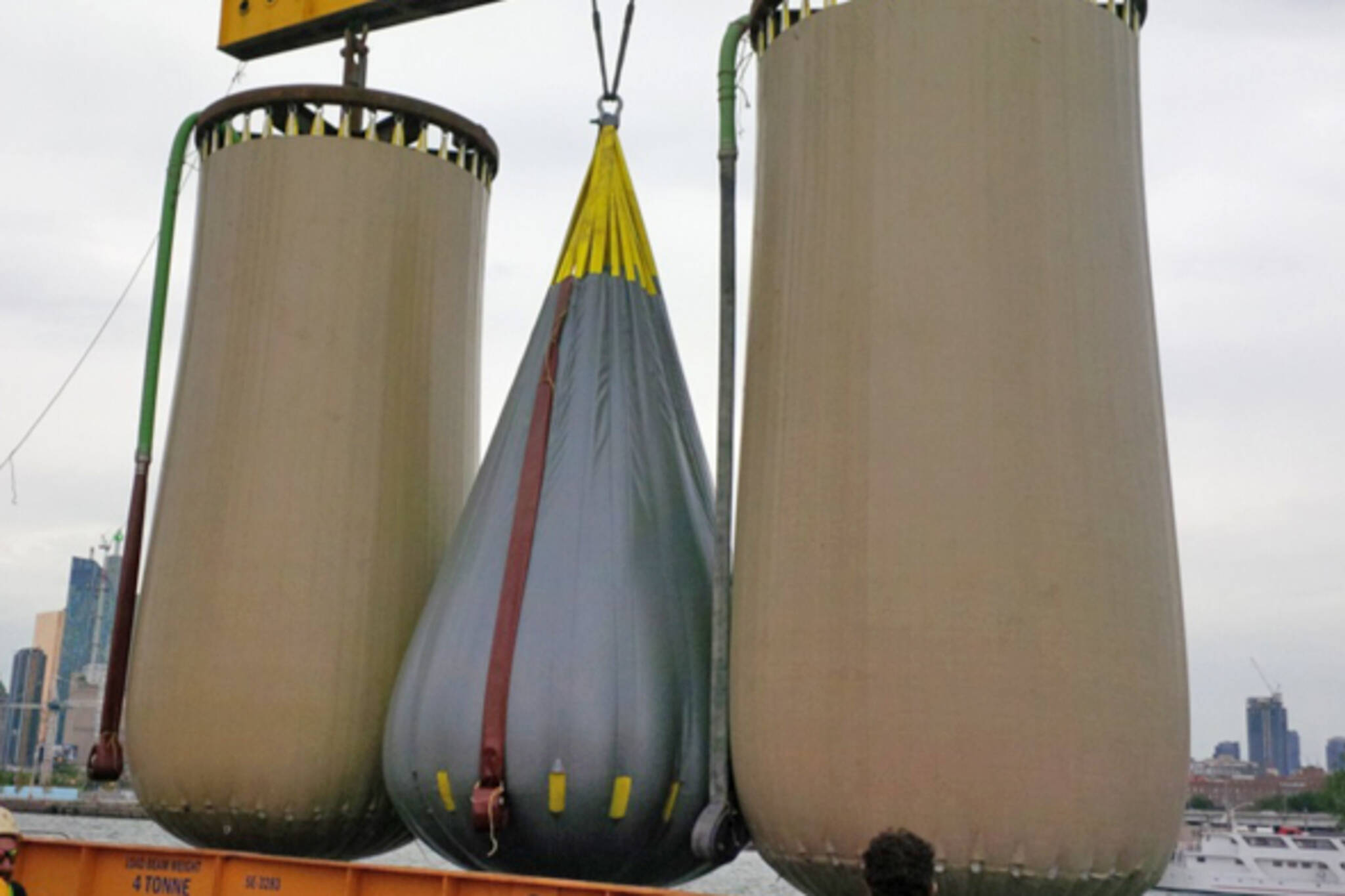
Toronto Hydro putting huge air bags in Lake Ontario
Toronto is debuting a forward-thinking, two-year pilot project today to store excess energy in giant air bags (balloons) around 55 metres below the surface of Lake Ontario. It's run by local startup Hydrostor and is connected to the power grid by Toronto Hydro. And, according to a Toronto Hydro promotional video, they're working to "test the world's first underwater compressed energy storage system."
So just how does this work? Hydrostor founder Cameron Lewis gives a pretty succinct explanation in the aforementioned YouTube clip.
"We take electricity from the grid, we run a compressor, convert that energy into compressed air, store that air under water and when we need that electricity back, the water pushes that air back to surface, we run a wheel and convert it back into electricity," he says.
"So basically, we are a very cool, underwater air battery," he continues. The balloons store energy for when we need it, during an extremely hot day for instance. Currently, the system can power approximately 300 homes. According to the Toronto Star, the six balloons are three storeys tall.
As the Globe and Mail notes, Hydrostor will likely bring its pioneering system to Aruba next and is looking to work with other countries in the Caribbean as well.
What do you think about this energy pilot project? Let us know in the comments.
Latest Videos
Latest Videos
Join the conversation Load comments







